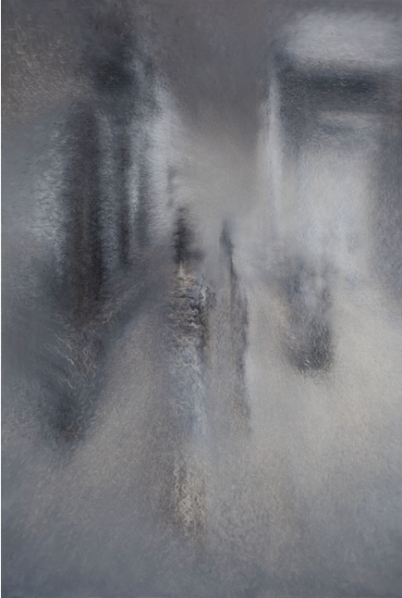
Tokyo Gallery + BTAP (Beijing) is pleased to announce its special exhibition Neo-Mōrōism, or in Chinese articulation, Neo-Menglongism. This exhibition is scheduled to run through September 14th to October 13th, 2013. Taking mōrō-tai (literally, vague or hazy style), a particular Japanese painting style that emerged a century ago as its premise, the exhibition gathers nine artists from four different countries, with hopes to give rise to a new global discourse regarding the meaning of painting. Participating artists in the exhibition are Wang Shuye, Wu Qiang, Zhu Jianzhong, Hang Chunhui, Yoo Taek-Geun, Elizabeth Allison, Hirohiko Nakano, Yasue Kodama and Miyazawa Danshaku. In addition, a major support is made by the Palace Museum, Beijing, as Song and Yuan dynasties’ painting reproductions from the museum will be presented in the exhibition.
Roughly one hundred years ago, Japanese painters practicing Nihonga (or Japanese-style painting) under the direction of art critic and philosopher Okakura Tenshin began to seek for innovative stylistic means to modernize Japanese paintings that resonated with their contemporary needs. Finding inspiration from western oil painting, specifically Impressionism, these artists eliminated the descriptive lines, which were the main component and most intrinsic expressive tool of Nihonga. Through subtle gradation of color and shade and misty execution of all form covering the entire picture, their new techniques depicted climatic conditions and nuances of light that were difficult to portray through traditional methods. While critics of the time condemned these works to be too Western-influenced, unrecognizable as Japanese, and bestowed the pejorative name mōrō-tai, which ironically stuck as the styles certified term, these artists’ efforts to integrate Western aesthetics to that of Japan in search for a new visual expression is considered today as an important art historical turning point.
Neo-Mōrōism does not intend to simply showcase works by contemporary artists, whose visual expressions and formal styles are similar to those accomplishments made by these old masters. However, more important is our awareness to painting's historical development that emerged outside of western culture and has yet to receive sufficient attention within in the art community worldwide. The reference to mōrō-tai is an attempt to establish a fixed ground where discussion on paintings can rise differently from the history of painting that has been theorized and promoted by the west. By extending the horizon far beyond East Asia, we hope to provide a perspective for a new understanding and perhaps reveal historical commonalities shared by paintings from different cultures and regions.
In conjunction with the exhibition, Tokyo Gallery + BTAP will publish a exhibition catalogue that features all participating artists and new essays written by art critic Toshiaki Minemura and artist Wang Shuye. In addition, the gallery will host a symposium on September 14th from 14:00 and an opening reception from 15:00.
About the exhibition
Duration: 14 September - 13 October, 2013
Venue: Tokyo Gallery + Beijing Tokyo Art Projects
Opening: Sat 14 September, 2013 15:00
Tel: 010-59784838
Add: 8503#, Ceramics Third Street, 798 Art zone E02, No.4 Jiu Xian Qiao Rd., Chao Yang District, Beijing
Courtesy of Tokyo Gallery + BTAP.




























